Saving Montecito, Again
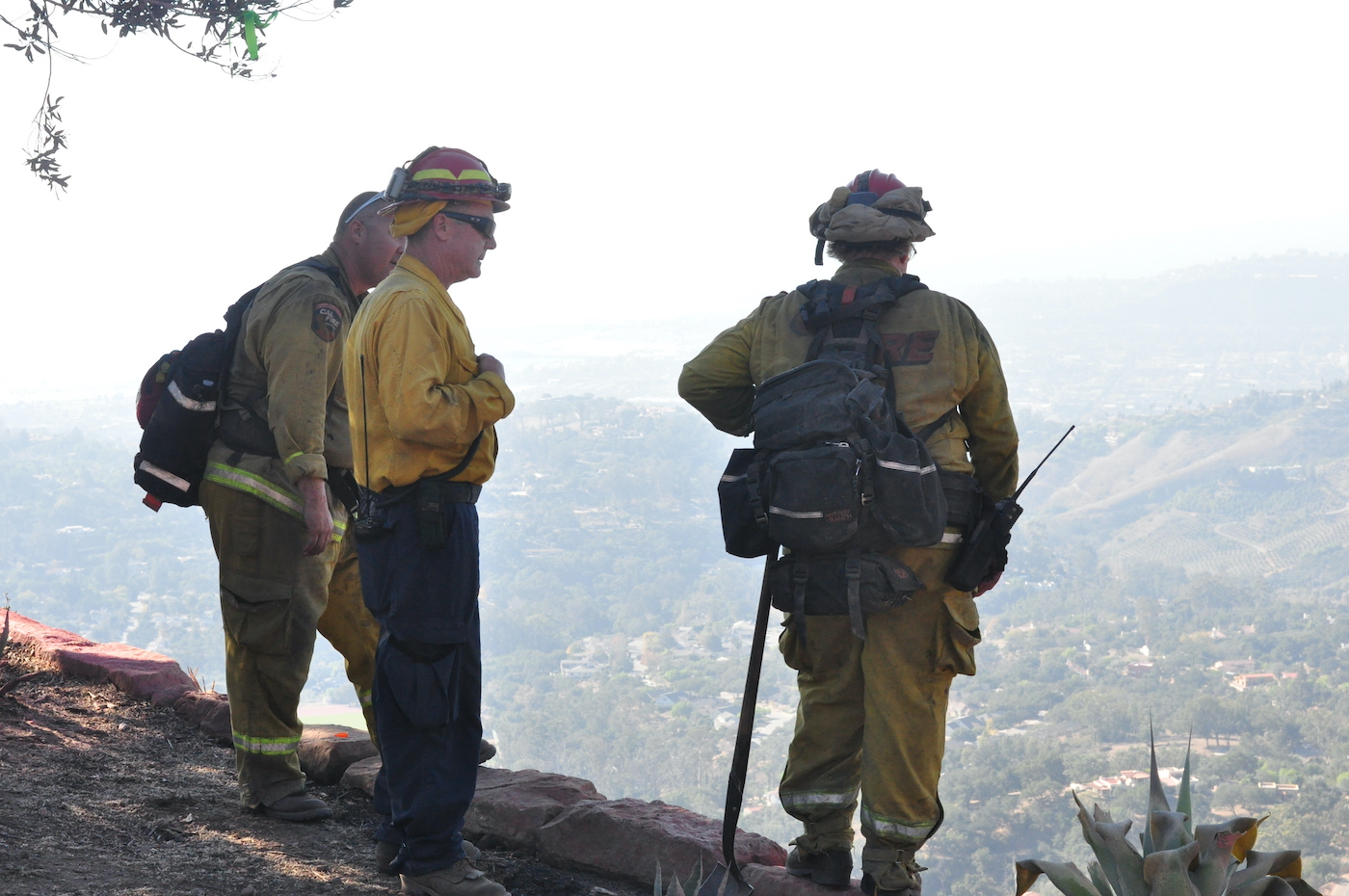
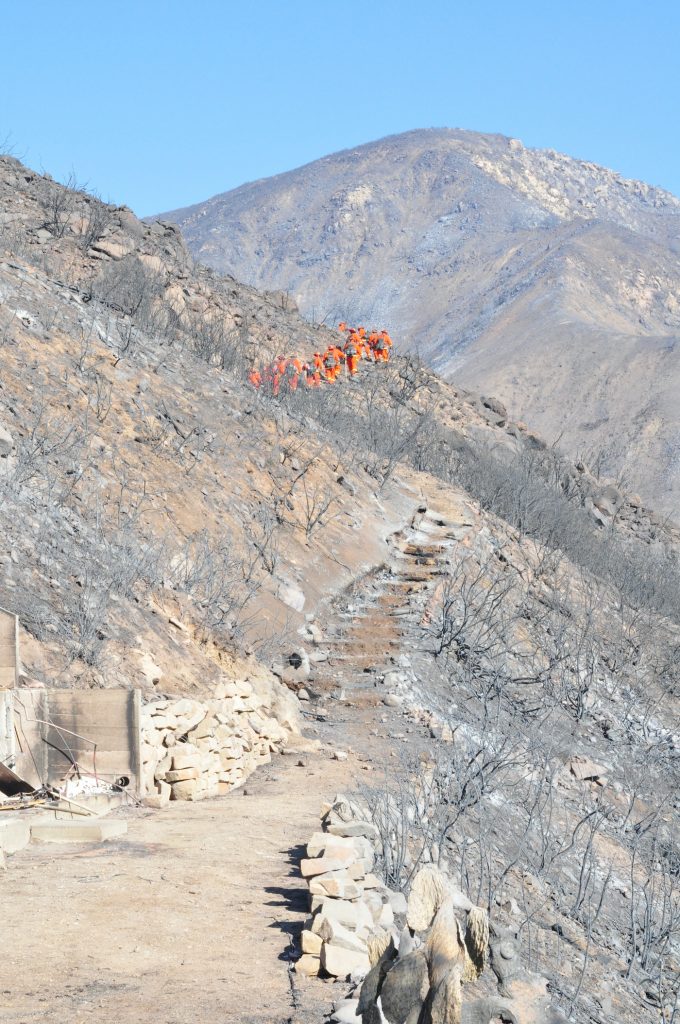
Last edition, the cover of Montecito Journal boasted the line “Saving Montecito”, with a photo of a Montecito fire truck at Station 1 on San Ysidro Road. Little did we know that roughly 48 hours after the newspaper hit stands, Montecito firefighters – along with thousands of others from across at least seven states – would be doing just that: valiantly saving billions of dollars of property in our community, during a catastrophic wind event that pushed the Thomas Fire’s flames into the foothills of Montecito. “It’s absolutely phenomenal that we didn’t lose 200 homes,” said Montecito Fire chief Chip Hickman.
While on tour with Chief Hickman earlier this week, assessment teams were out in full force surveying the damage of Saturday morning’s northeast wind event, which caused the Thomas Fire, which started December 4 in Santa Paula, to move from our back country to the front country, close to hundreds of homes. “We prepared for the worst, hoping it wouldn’t happen. But it did,” he said.
As of press time: 10 homes in Montecito have perished, and an additional 10 to 20 are likely to be deemed damaged. The Thomas Fire has burned 272,000 acres, destroyed 1,044 structures, damaged 259 structures, and caused the evacuation of more than 100,000 people, including at one point the entirety of Montecito. Two fatalities have been reported, including a woman fleeing her home in Santa Paula and firefighter Cory Iverson of San Diego, who died fighting the eastern edge of the fire in Ventura County last week. Total cost to fight the fire thus far: $140 million.
Montecito was most heavily impacted the morning of December 16, when Chief Hickman described a two-mile-long flank of fire spanning from Park Lane to Coyote Road, making its way to the heart of Montecito. “At that point, I knew it was going to be worse than we anticipated,” he said. With dozens of engines lined up and down Sycamore Canyon, Cold Spring Road, Ashley Road, and beyond, and a scheduled shift change effectively doubling the number of firefighters on the ground, Hickman said the District was never more ready to fight a fire of this magnitude.
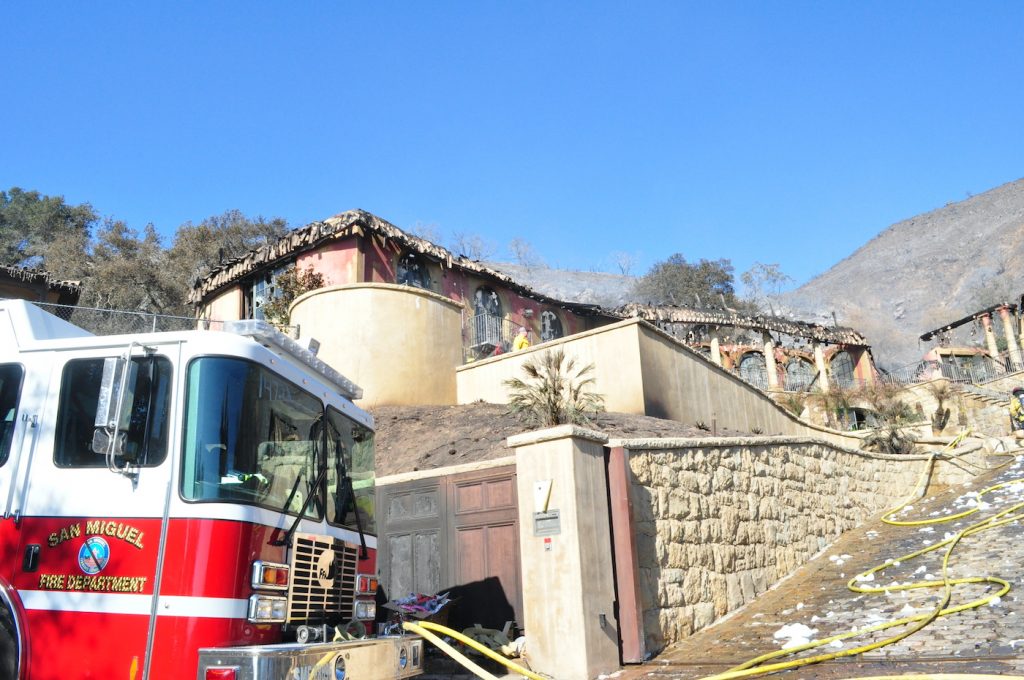
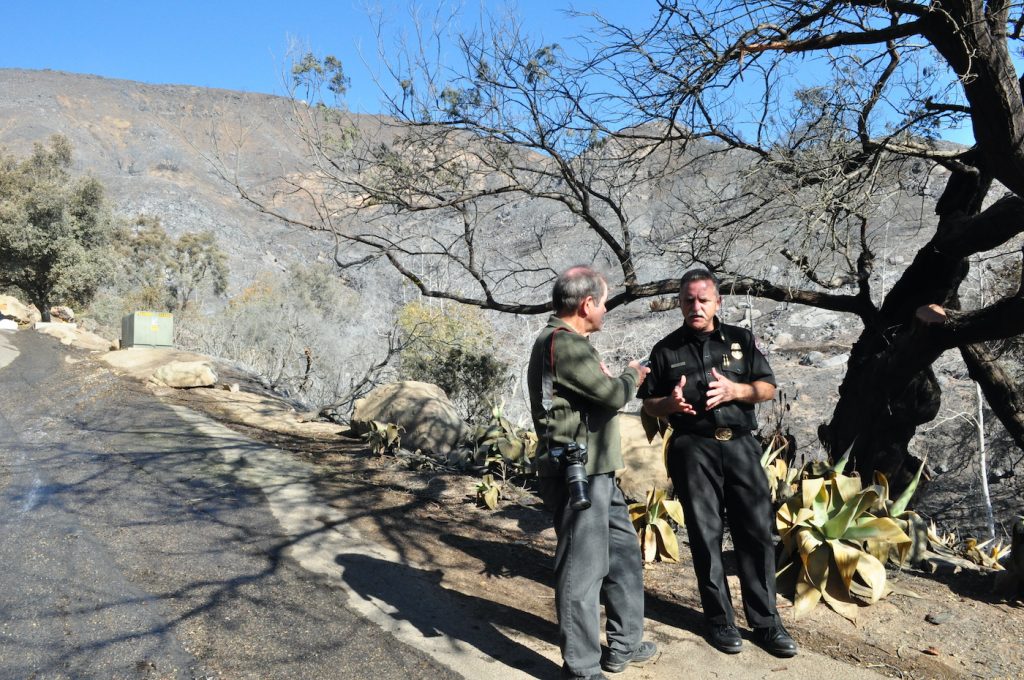
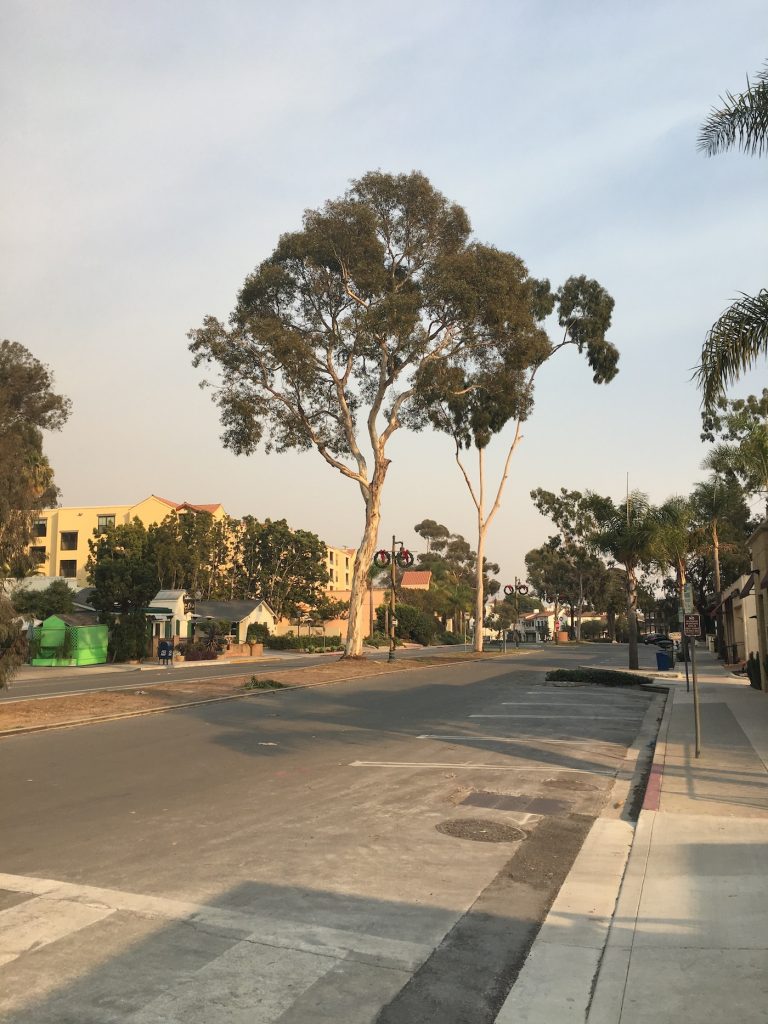
He said the combination of the countless personnel and engines, as well as pre-planning by his own team, led to the successful firefight. MFPD Battalion chief Travis Ederer is credited for developing incredibly detailed maps of our area, which were shared with firefighters not familiar with our winding and narrow roads. “This helped them learn the territory and engage effectively,” Hickman said. “Those maps literally saved billions of dollars in homes.” Extensive hazard mitigation by MFPD and residents beforehand, as well as compliance with evacuation orders, led to successful fire suppression.
A plethora of evacuation orders were handed down December 16, beginning at 8:15 am. Areas in Summerland, Montecito, and Santa Barbara were given voluntary and mandatory evacuation orders; as of press time, some areas above Highway 192 remained evacuated. “For the most part, people left when we ordered them to leave, allowing us to do our job,” said Hickman, who along with MFPD Division Operations chief Kevin Taylor went on patrol of the area at 2 am December 17, checking on the firefighters who were keeping guard all night. “These firefighters treated our community like it was their own backyard, doing everything they could to save property,” he said. “It was incredible.”
Both Montecito business districts were hit hard by the Thomas Fire; the upper village was evacuated on Sunday, December 10, and reopened more than a full week later, on Monday, December 18. Coast Village Road businesses were open but struggling to garner business, due to the stifling smoke and falling ash related to the fire. Blue skies seemed like a break in the poor conditions on the morning of December 14, which prompted Coast Village Association to continue plans for its Shop Local event that evening. As the winds changed and the controlled burns in Summerland and Montecito flared, Montecito was once again hit with smoke and ash, putting a damper on the shopping event.
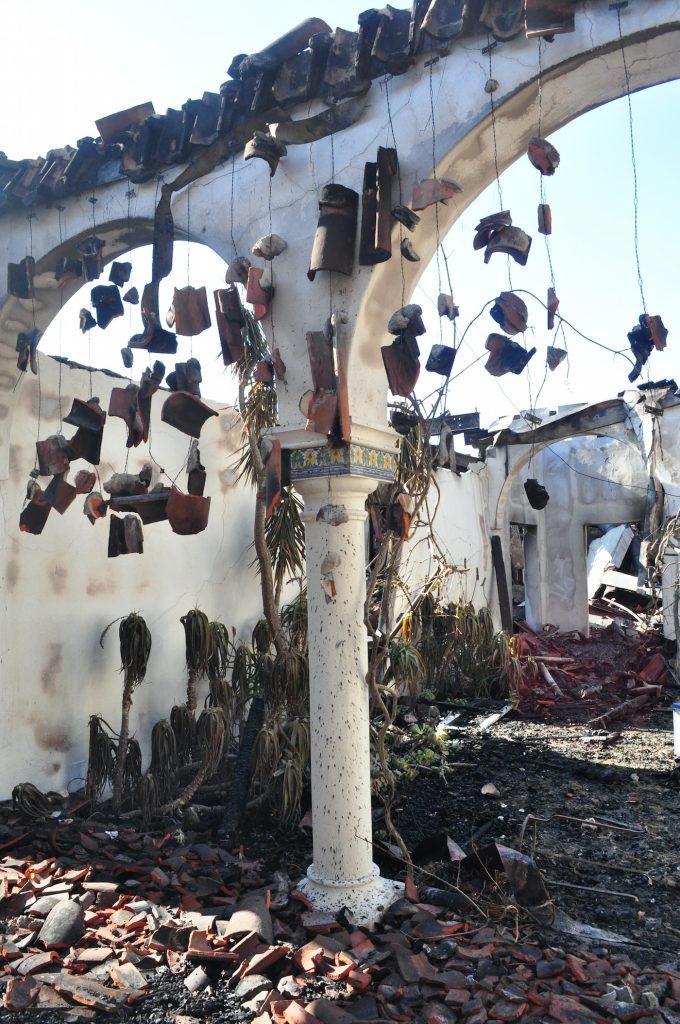
Fewer than two days later, the road and all residents above Highway 101 would be evacuated, hurting holiday business even more. “The CVA intends to respond and act on behalf of Coast Village businesses and patrons, pooling and applying our resources as necessary to ensure these businesses are able to survive this unanticipated and untimely loss of revenue and traffic,” said CVA board president Bob Ludwick. Coast Village was reopened Tuesday, December 19, at 6 am, while the rest of the evacuation zone, MTO 9, remained under mandatory evacuation.
The fire worked its way through the foothills of Montecito, eventually losing steam at the burn scar of the Tea Fire, which we visited with Chief Hickman on December 19. Dozens of inmate hand crews from local prisons were putting out hotspots, led by commanders from CalFire. “The burned areas will smolder for days, and can potentially reignite,” Hickman said. As of press time, the fire continued its way toward the Jesusita burn scar, with hopes that it would be far enough contained despite forecasted winds this week.
On Tuesday, Chief Hickman personally escorted homeowners who lost their homes to survey the damage and sift through the ashes. “It’s a somber time for us, as well as the homeowner. Any time we lose a home, it weighs on us,” he said. Homes were lost on Park Hill Lane, Park Lane, East Mountain Drive, and Hot Springs Road. Other homes on those streets were damaged, as well as on Oak Creek Canyon. Buildings belonging to the Montecito Water District at the Jameson Reservoir were also lost.
Chief Hickman said the fire cleared decades of fuel off the hills in Montecito, which is great for future fire suppression. Looking ahead, the District will help those residents who lost homes and will continue hazard abatement and mitigation measures in the Montecito foothills.
More Fire Impacts
With the Thomas Fire on the brink of becoming the largest wildfire in California history– as of press time, the fire was the third largest, and about to become the second – Santa Barbara and Ventura counties are feeling the long-reaching ramifications of the fire. Mission Beekeeping, a beekeeping business that started in 2015 in Ventura County, lost half of their beehives during the fire. Husband and wife Steve and Kelly Nimmer started the company to find homes for hives by removing swarms from unwanted areas and then keeping them healthy enough to pollinate and produce honey.
The Nimmers were awoken from their sleep at midnight on December 5, with news of the fire. They immediately rushed to the bee yard housing their 150 hives, where they confronted the flames on the ridge. Over the next six hours, they were able to rescue and move half of their hives as the fire got closer and closer, but on the third trip, the flames had reached the rest of the hives. The surviving ones are currently being located in Carpinteria. While the hives has been moved three times out of the fire’s path, the hope is that they will remain safe at this location for the time being.
The couple are now making plans to rebuild, and friends of theirs have launched a Go Fund Me campaign to raise funds to grow their beehives and get the business back on track. The link for the Go Fund Me campaign is: www.gofundme.com/thomas-fire-beekeeping-recovery. They plan to use these funds to purchase seeds that can provide plant diversity in the bee yards that have been burned, queen bees for new colonies that will be split from colonies that survived, and hives from migration beekeepers to keep locally after almond pollination season.
The Nimmers are also seeking coastal properties to permanently host their beehives. For more information, visit www.missionbeekeeping.com.





